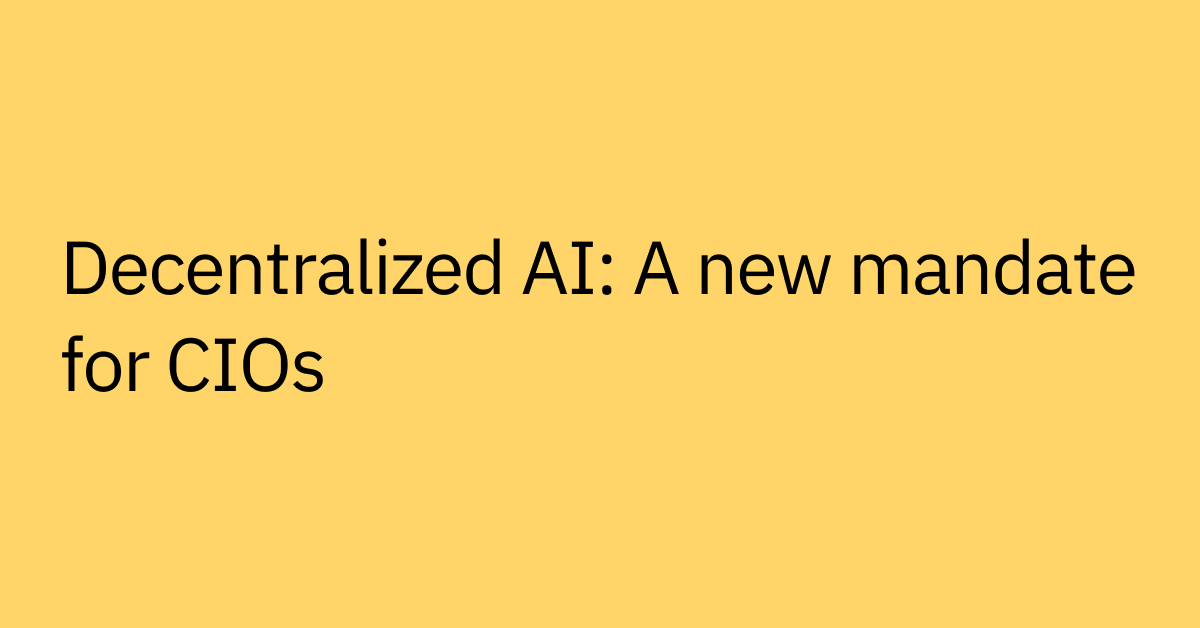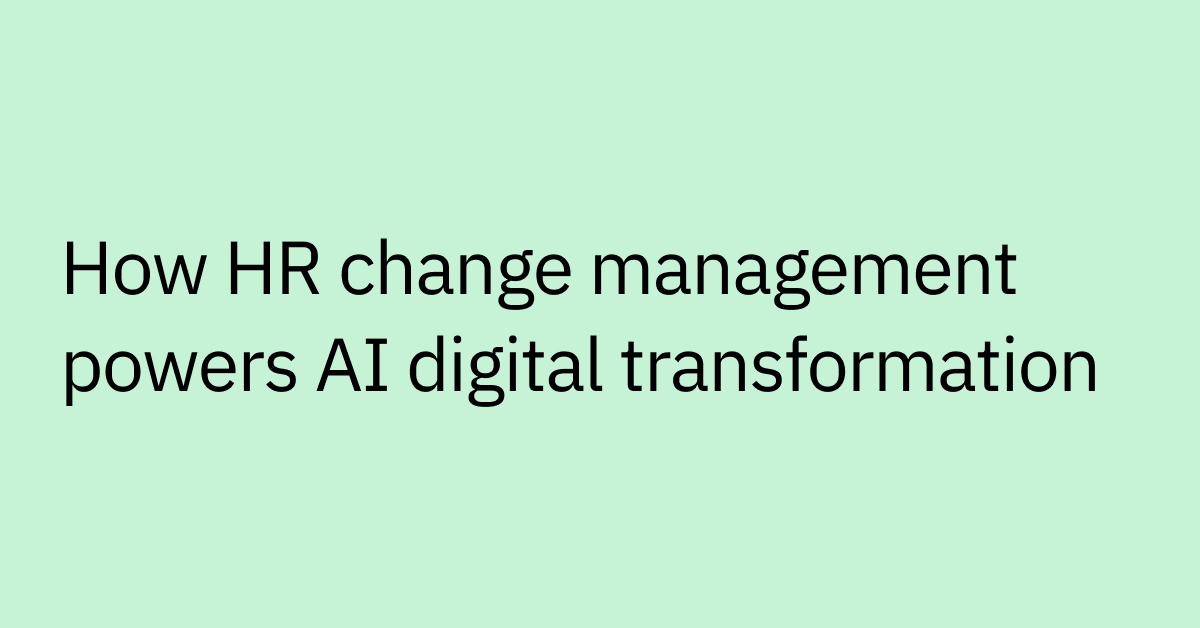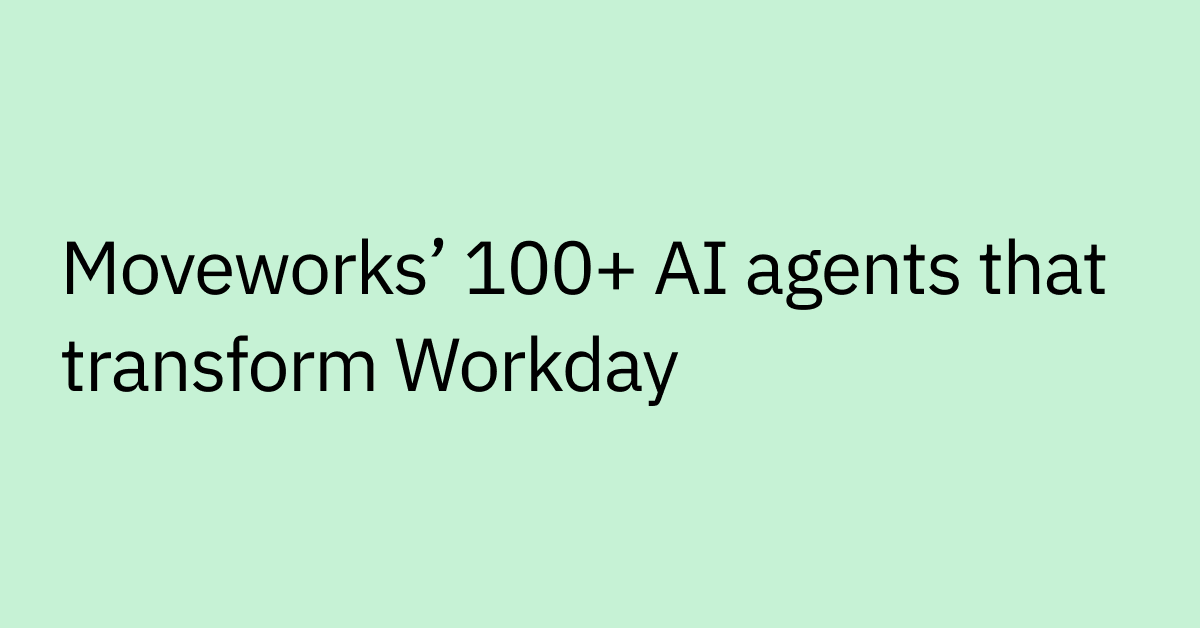Table of contents
Highlights
- An AI Center of Excellence establishes clear structure, governance, and accountability to scale enterprise AI initiatives effectively.
- It eliminates duplication and silos by aligning teams, processes, and technology under unified strategy and oversight.
- Strong CoEs integrate data management, compliance, and change enablement to accelerate adoption across business units.
- The optimal model—centralized, decentralized, or hybrid—depends on company maturity and regulatory needs.
- A well-run CoE evolves through foundation, acceleration, scale, and maturity phases to deliver measurable business value.
If you’re planning to scale AI across your organization — or already using Moveworks — chances are you’ve asked yourself: How do we manage this at scale, securely, and strategically?
The answer: establish a Center of Excellence (CoE).
A Center of Excellence gives you the structure, people, and processes needed to institute AI use responsibly, unlock value faster, and drive innovation across an organization.
Whether you're just getting started or maturing an existing program, this guide will walk you through what a successful AI CoE looks like and how to make it work.
Why you need an AI Center of Excellence
When you launch AI in your enterprise, you're not just deploying a tool. You're transforming how work gets done. And transformation — real transformation — requires structure, intentionality, and governance.
Without a structured process in place, it’s easy to end up with siloed efforts, duplicate agents, or worse — a lack of trust in the AI itself. Different departments might try to solve similar problems in isolation.
You might encounter inconsistent quality or misaligned goals. Even worse, there is misuse of organization resources and agent chaos.
A CoE helps you:
- Align stakeholders on goals and roadmaps
- Accelerate deployment and adoption
- Ensure transparency, compliance, and governance
- Scale AI initiatives across business units without chaos
By centralizing your AI efforts, you set your team up for success, build trust in AI, and deliver long-term impact.
What makes an effective AI CoE: The agentic framework
At Moveworks, we’ve helped over 350 organizations implement enterprise AI. From that experience, we developed a framework for a successful Agentic CoE — one that gives you visibility and control over three core functions:
1. AI assistant
Your user-facing interface. This is how employees interact with the AI — to get help, submit requests, and take action across departments.
2. Search and knowledge
This powers the AI assistant. A well-structured, context-aware knowledge base ensures that answers are relevant, real-time, and reliable.
3. Agentic automation
This is what moves you from a chatbot to a true AI platform. It connects your Assistant to backend systems to reset passwords, provision tools, update HR records, and more — all autonomously.
Together, these pillars help your teams work smarter — not harder.
How to put your CoE into practice
To operationalize your CoE, you’ll need to:
- Define clear processes and workflows for governance, project intake, and agent development
- Implement project and change management to ensure smooth rollouts and stakeholder buy-in
- Track performance with KPIs that measure time saved, ROI, adoption, and success rates
- Decide on a structure: centralized, decentralized, or hybrid — whatever fits your team best
The most successful CoEs are proactive. They plan, measure, and continuously optimize.
Want help getting started? Let’s talk.
Build your dream team
Your CoE doesn’t need to be big — but it does need the right people. Here’s who you’ll want on board:
- Executive sponsor – Champions the program and ensures alignment with company strategy
- Platform administrator – Owns the platform, tracks success, and drives roadmap execution
- Project manager – Keeps your timelines and resources on track
- Knowledge manager – Maintains and improves your AI-ready knowledge base
- Enterprise architect – Ensures your AI systems integrate cleanly with your existing stack
- Agent developers – Build, test, and deploy the automations that drive outcomes
You can start small, then scale as your program matures.
Choose the right operating model
When setting up your CoE, you’ll need to decide which agentic development model to adopt. Here’s how the models break down:
- Centralized CoE
Your executive team oversees all AI projects, maintaining tight control over standards, security, and integration
- Decentralized CoE
Business units manage their own AI initiatives, with more flexibility — but less consistency
- Hybrid CoE
The best of both worlds, offering oversight where needed and autonomy where it matters
Not sure which model to choose? Start centralized, then shift as your maturity grows.
Evolving your CoE over time
Your AI Center of Excellence will mature in four distinct phases. Each phase lays the groundwork for the next, helping you scale AI thoughtfully and sustainably.
Phase 1: Foundation
This is where you build your base. You’ll define your CoE mission, success metrics, and governance model. Assign core roles, assess your current tools and data, and begin internal awareness to align stakeholders.
Phase 2: Acceleration
Now it’s time to deliver early wins. Prioritize a few high-impact use cases, launch pilot projects, and stand up your agent development workflows. As you gain momentum, invest in data readiness and internal training.
Phase 3: Scale
At this stage, your CoE shifts from project-based delivery to enterprise adoption. Deploy reusable agent components, establish your enterprise AI platform, and lead broader cultural change through internal champions.
Phase 4: Maturity
Your CoE is now a strategic enabler. You’re exploring new AI capabilities, benchmarking success across the org, and expanding globally. You’ve built the infrastructure to drive continuous learning and innovation at scale.
Ready to build your CoE?
If you’re a current customer, setting up a CoE will help you get more out of your Moveworks investment — faster and with fewer roadblocks.
If you're just exploring, this is your roadmap for building a strong, scalable AI program from day one. No matter where you’re starting from, the key is to build with purpose, govern with clarity, and scale with confidence.



